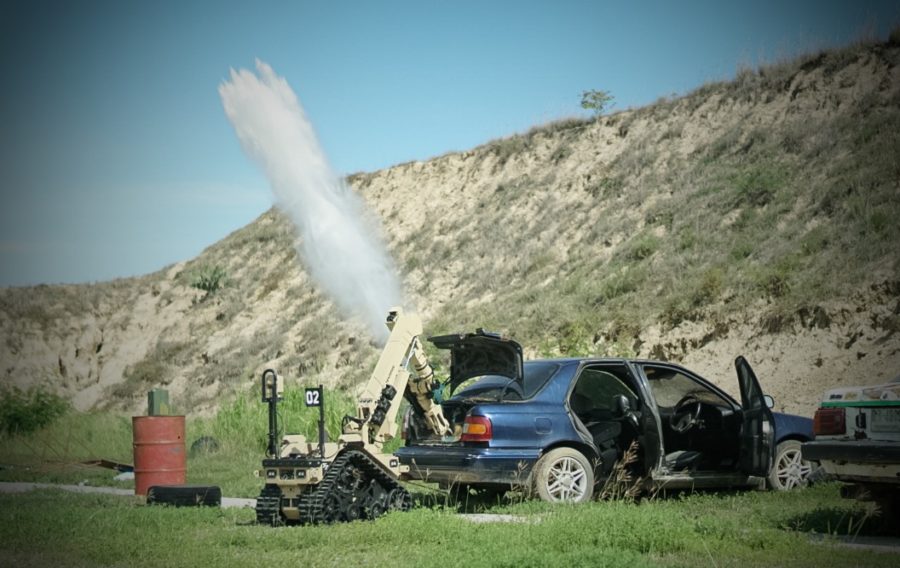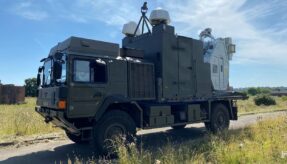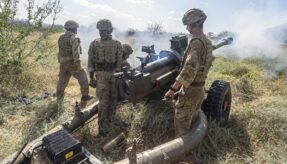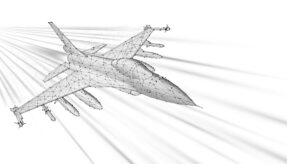
In late December 2018 Defence Secretary Gavin Williamson revealed that, following a period of rigorous testing, the British Army had taken receipt of its first four cutting-edge bomb disposal robots.
This was a major milestone for the £55 million contract which, once fulfilled, will see 56 Harris-manufactured bomb disposal robots delivered to the British Armed Forces.
The robots in question – the T7 unmanned ground vehicle (UGV) – utilise high-definition cameras, ‘lightning-fast’ datalinks, an adjustable manipulation arm and durable all-terrain treads to neutralise a wide variety of explosive threats.
Initially, the T7 model was procured by Defence Equipment and Support (DE&S), the procurement arm of the Ministry of Defence, as part of Project Starter. The deal was announced in September 2017 during the Defence and Security Equipment International (DSEI) exhibition in London.
Project Starter has since placed an order for 56 Harris T7s in support of the military’s Explosive Ordnance Disposal (EOD) teams. In doing so, the MOD hopes to retire the British Army’s existing fleet of Wheelbarrow Mk8B remote-controlled EOD robots which have been in use across the globe by UK Armed Forces since 1972.

DPRTE Official Partner: DE&S
For Lieutenant Colonel Thornton Daryl Hirst, Section Head of Remote Controlled Vehicles within DE&S’ Special Projects Search and Countermeasures team, this was welcome news. He said: “The first four production standard vehicles have been delivered early to the British Army, enabling us to conduct train-the-trainer packages from January onwards. The hard work and dedication of my team has helped ensure that this critical project has run to time and cost and the trials exceeded our performance expectations.”
Previously, the T7 endured eight weeks of ‘acceptance’ trials at specific sites across the UK and US, during which the robots were put through their paces. Trials included multi-terrain driving, battlefield missions, weightlifting and dexterity-related assignments, climatic and vibration testing, high stress capabilities, live-firings, maximum traversing angles and interoperability assessments.
According to Defence Secretary Gavin Williamson: “These robots will go on to be an essential piece of kit, preventing harm to innocent civilians and the brave operators who make explosives safe. The robots will provide the Army with the latest bomb-disposal technology and will prove to be trusted companions both on UK streets and in deadly conflict zones.”
Colonel Zac Scott, Head of the Defence EOD & Search Branch, added: “Remote Control Vehicles (RCVs) are critical to the safe conduct of Explosive Ordnance Disposal tasks. The Harris T7 harnesses cutting-edge technology to provide EOD operators with unprecedented levels of mobility and dexterity. It represents a step-change in capability for our Service personnel and it will save lives.”
The Harris T7 employs ‘advanced haptic feedback’ which enables operators to ‘feel’ their way through the intricate process of disarming an explosive from a safe distance, protecting UK soldiers from threats such as roadside IEDs (improvised explosive devices).
This haptic feedback function is designed to provide operators with dexterity on par with a human hand as they manipulate the robot’s mechanical arm using a remote-controlled grip. Crucially, the T7 also gives the operator physical feedback, allowing intuitive and precise control.
According to Ed Zoiss, President of Harris Electronic Systems, the MOD’s endorsement of T7 – itself a relatively new model – is only the tip of the iceberg. “T7’s selection by the UK MOD represents the first of many opportunities for Harris to deliver lifesaving technology to warfighters and law enforcement personnel worldwide,” said Zoiss.
All 56 robots are due to be delivered to the UK and enter into service by December 2020.
image © Crown Copyright
To be at the forefront of the discussions by attending, sponsoring or exhibiting at DPRTE 2019, book now at www.dprte.co.uk/book-now
If you would like to join our community and read more articles like this then please click here.
DE&S Defence Equipment and Support Gavin Williamson Harris T7







